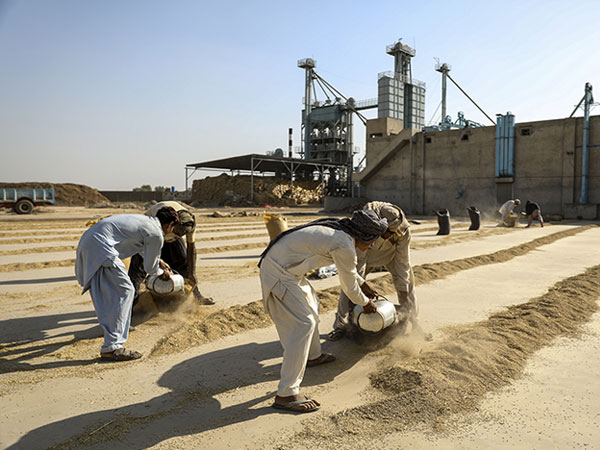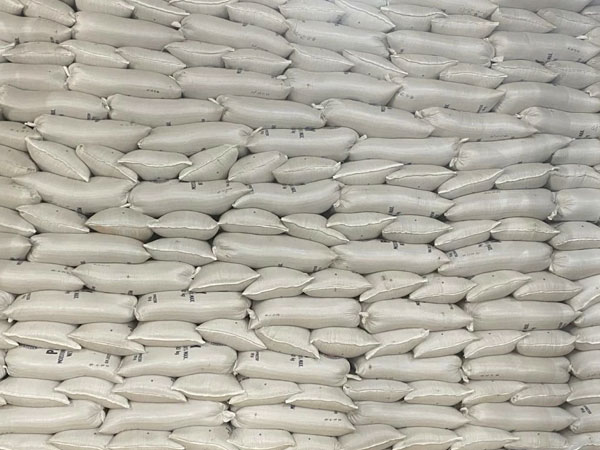 Recent heavy rains and floods have damaged about one-fifth of the rice crop in Pakistan’s Punjab province, which accounts for majority of the production in the world’s fourth-biggest exporter of the staple.
Recent heavy rains and floods have damaged about one-fifth of the rice crop in Pakistan’s Punjab province, which accounts for majority of the production in the world’s fourth-biggest exporter of the staple.
Rice yields in the region, which saw the worst flooding in more than three decades, are likely to drop by more than 9 percent this year, according to a report by Pakistan’s government and the Rice Exporters Association of Pakistan seen by Bloomberg. The report was confirmed by Faisal Jahangir Malik, Chairman of the rice association.
More than one million acres (404,685 hectares) of rice crops were impacted by floodwaters, while rains destroyed over 370,000 acres, said the report. That equates to about 15 percent of the country’s total rice growing area.
The likely drop in Pakistan’s output could support global rice prices, which have fallen more than 40 percent from a 15-year high in January 2024, and could offer some relief to rival exporters in India, Vietnam, and Thailand.
Pakistan’s national food security and research minister, Rana Tanveer Hussain, did not respond to a request for a comment.
The Punjab province accounts for 68 percent of Pakistan’s total annual food grain production, and this year’s precipitation in the region has been particularly severe. The country is grappling with the impacts of months of extreme rainfall that have killed more than 1,000 people and displaced around 4 million.
About 543,000 acres of rice area were flooded earlier in the area, according to a joint report from agencies including Microsoft’s AI for Good Lab and NASA Harvest, which cited satellite-based analysis. The rice acreage in Punjab is estimated at about 6.47 million acres.
Cocoa crunch
The world’s cocoa crunch is finally showing signs of a turnaround, as better harvests in South America and waning demand put supplies on track for a back-to-back surplus.
Production is forecast to outpace consumption by about 186,000 tons in the 2025-26 season that starts next month, according to the average estimate of as many as 13 analysts and traders compiled by Bloomberg. That would be more than double the size of the surplus in the current season, the survey showed.
The improvement will help replenish global inventories that had been depleted following consecutive poor harvests in West Africa, a major growing region. That pushed New York futures up more than fourfold in the past three years, reaching a record in December and raising chocolate costs for consumers.
While still historically high, prices have fallen about 40 percent this year as consumers buy less chocolate and chocolatiers reformulate recipes. Coupled with the prospect of better harvests, that could limit fresh rallies.
“Prices are expected to trend downwards in the short and medium term,” Oran van Dort, a Rabobank analyst, said on the sidelines of the European Cocoa Forum last week.
Much of the supply improvement comes down to South America.
Farmers in Ghana and Ivory Coast —the world’s two biggest producers —receive a fixed farmgate price, set by the government, which has limited the immediate benefit from the cocoa rally. Markets elsewhere are liberalized, and the run-up incentivized farmers to expand plantings, with trees now beginning to bear beans.
Production in Ecuador, the third-largest grower, is expected to increase by about 5% to 580,000 tons in the next season on better yields and new plantations, Julio Moscoso, commercial director at Latam Commodity Traders, said on the sidelines of the European event.
Combined with increases in nations like Peru, Columbia and Venezuela, that may boost South American output by as much 100,000 tons, barring bad weather, said Vladimir Zientek, a trading associate at StoneX Group Inc.
Expensive beans are also straining cocoa demand as chocolatiers raise prices of their products, adding to the potential surplus. Analysts and traders in the survey said they expect consumption to continue slowing as consumers cut back and some chocolatiers buy less or use cocoa alternatives to reduce costs.
Bean processing dropped in Europe, Asia and North America in the second quarter, and the next quarterly figures may show further declines, they said.
Still, output in West Africa’s heavyweights is struggling to recover to peak levels due to unfavorable weather, aging trees and the spread of crop diseases, like swollen shoot. That remains a key supply risk.
Output in Ivory Coast is projected at about 1.8 million tons, according to the average estimate of five traders in the survey, who indicated that would be near steady with the current season.
Traders are monitoring weather conditions as the return of rains helps boost soil moisture following one of the harshest dry spells on record for a stretch of July and August.
“Despite rainfall improving in the last week and the upcoming forecasts displaying further precipitation, overall weather has not been ideal for 2025-26 production,” van Dort said. “Weather in the last two months has most likely led to some reductions in production forecasts.”














© Copyright 2025 The SSResource Media.
All rights reserved.